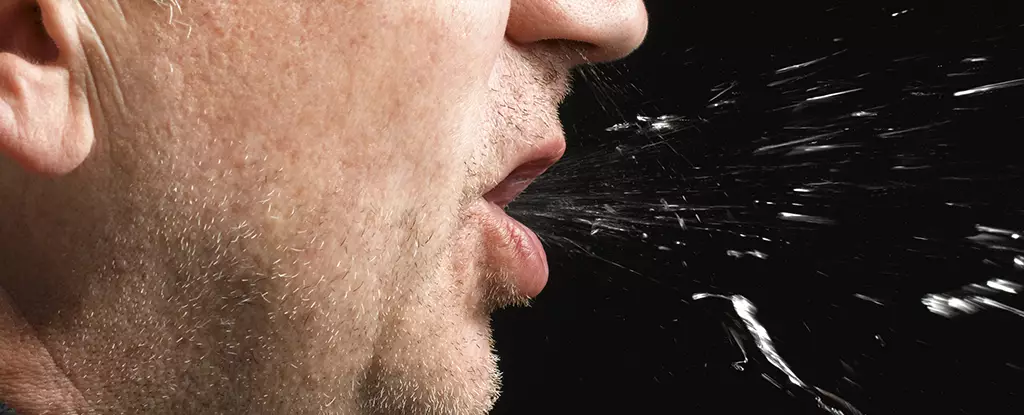In the ongoing battle against infectious diseases, a keen understanding of how respiratory droplets disperse is pivotal. As recent studies have illuminated, our everyday actions—talking, coughing, and even breathing—release droplet sizes and velocities that carry implications for public health. Researchers in France have taken significant steps to quantify these factors, employing experimental techniques that promise to enhance infection control measures. Increased precision in measuring droplet dynamics not only empowers scientists but also provides the public with actionable insight into preventative health strategies.
Cutting-Edge Methodology: ILIDS and Its Implications
The study under scrutiny employed an innovative technique known as Interferometric Laser Imaging for Droplet Sizing (ILIDS), which harnesses high-speed cameras and laser light to accurately track the characteristics of droplets exhaled by a group of 23 volunteers. This sophisticated method ensures that minute details about droplet size and speed are captured, offering a rich dataset far beyond what has been previously achievable. The revealing findings focus on the spectrum of droplet sizes, ranging from 2 micrometers (µm) in a relaxed state to a staggering 60 µm during coughs—a substantial range that carries differing risks for transmission.
While previously available data has drawn a mixed bag of conclusions, this meticulous approach shines a needed spotlight on the variability inherent in droplet emissions. By capturing droplet dynamics across different modes of breathing—especially in a controlled laboratory environment—the researchers not only clarify existing ambiguities but also pave the way for more effective public health directives.
Mask Efficacy: A Clear Victory for Public Health
One of the most compelling outcomes of this study is the quantifiable effectiveness of masks in blocking droplet transmission. Findings reveal that both tissue and surgical masks can obstruct upwards of 86% of droplets emitted during various exhalations. This significant reduction illustrates the masks’ potential role in curbing virus spread, reinforcing the public health message advocating for mask use, especially in crowded or indoor spaces.
Yet the researchers cautioned against complacency, arguing for a nuanced understanding of mask efficacy. Variations in droplet dynamics are influenced not just by the type of mask but also by individual facial characteristics and the proper application of the mask itself. This delineation emphasizes the necessity for ongoing research focusing on tailoring masks based on individual facial shapes to maximize their protective capabilities.
The Surprising Role of Superspreaders
An illuminating aspect of the research underscores the concept of “superspreaders.” The variability in droplet size and velocity measurements among different participants hints at why some individuals seem to facilitate the spread of illness more than others. The findings indicate that certain people produce larger and more aggressive droplets, establishing a compelling case for identifying and understanding these superspreaders better. Their role in dynamic droplet dispersal merits extensive study, potentially enabling health officials to target interventions more effectively.
As researchers noted, further investigation is warranted to comprehend how individual traits and environmental conditions interact with droplet emission characteristics. Understanding superspreaders within the context of this variability can significantly enhance public health strategies aimed at reducing infection rates.
The Call for Larger Sample Studies
While the initial findings provide a robust foundation, the researchers are keen to expand their study. They propose engaging a more diverse population in order to draw a comprehensive profile of droplet emission patterns. Such an endeavor would facilitate a richer comprehension of the interplay between biological variability and protective measures like mask-wearing. This collaborative effort can result in guidelines that evolve in tandem with our understanding of droplet dynamics, which is essential for adapting our health practices in a post-pandemic world.
The intricate research exploring the dynamics of respiratory droplets lays the groundwork for revolutionized health policies. By elucidating how spit travels, it not only empowers individuals to make informed decisions about their health but also strengthens collective measures to protect public safety. The path ahead is undeniably complex, yet crucial in our pursuit of robust health solutions in a world still grappling with the ramifications of infectious disease transmission.

